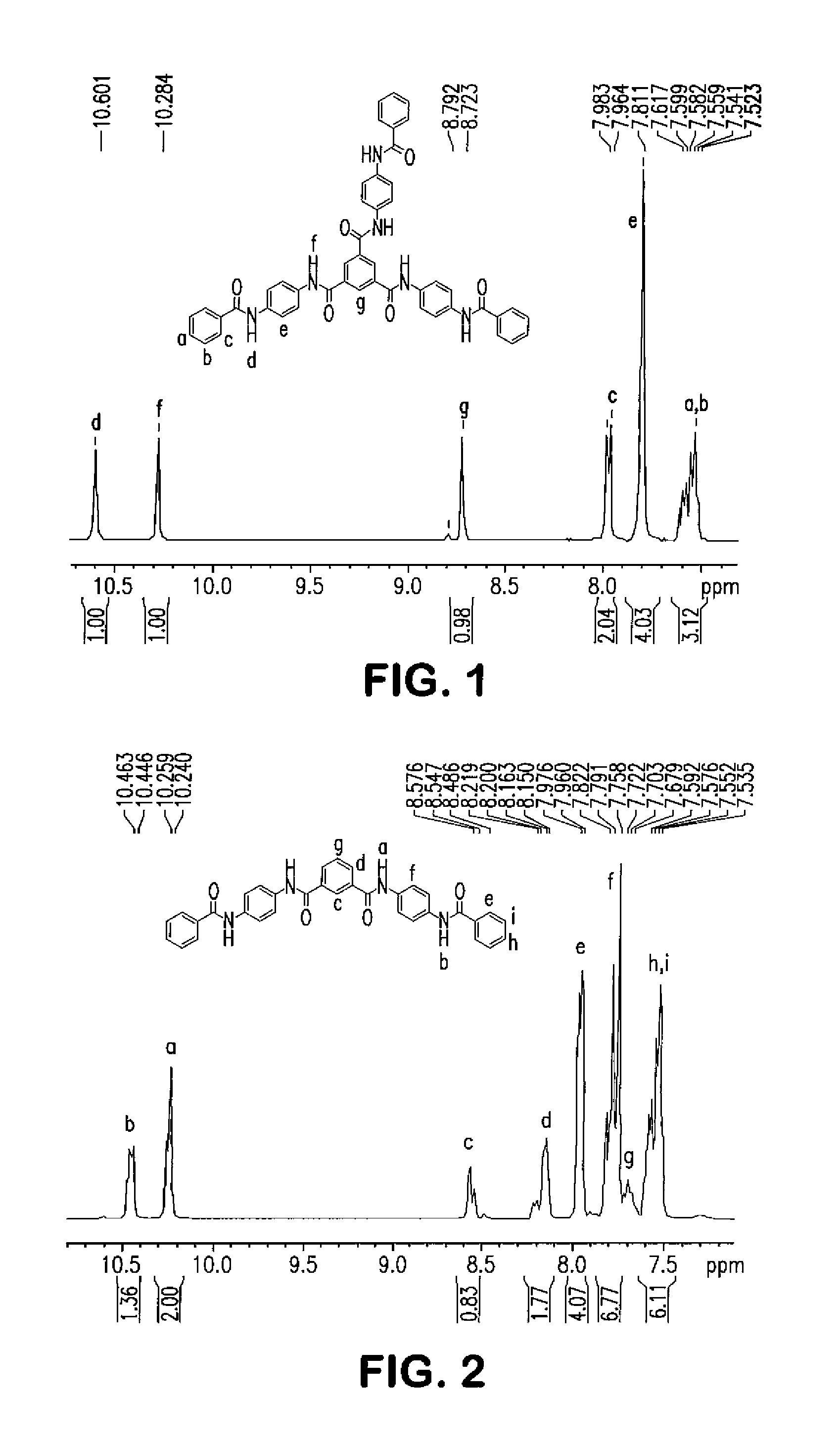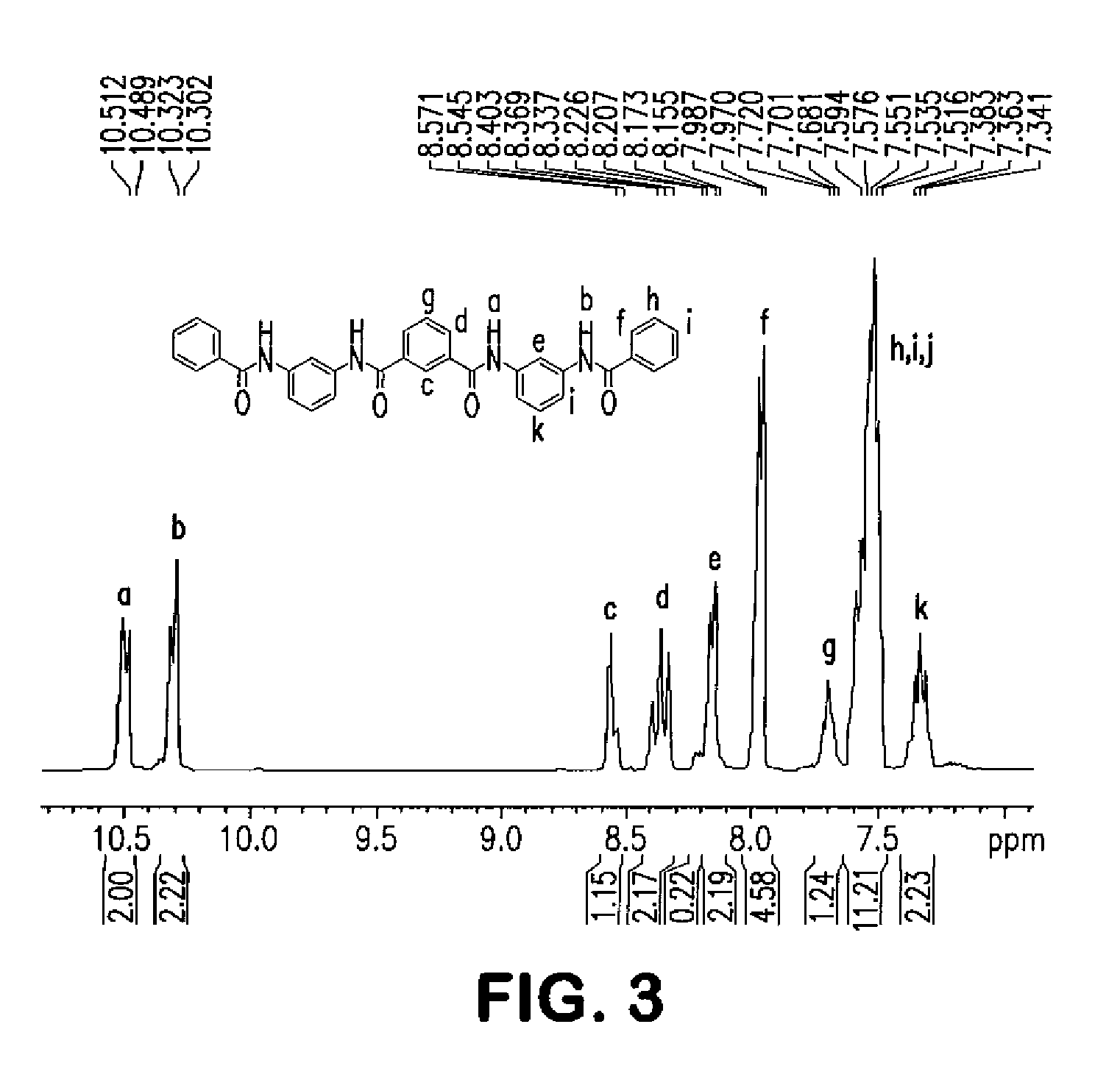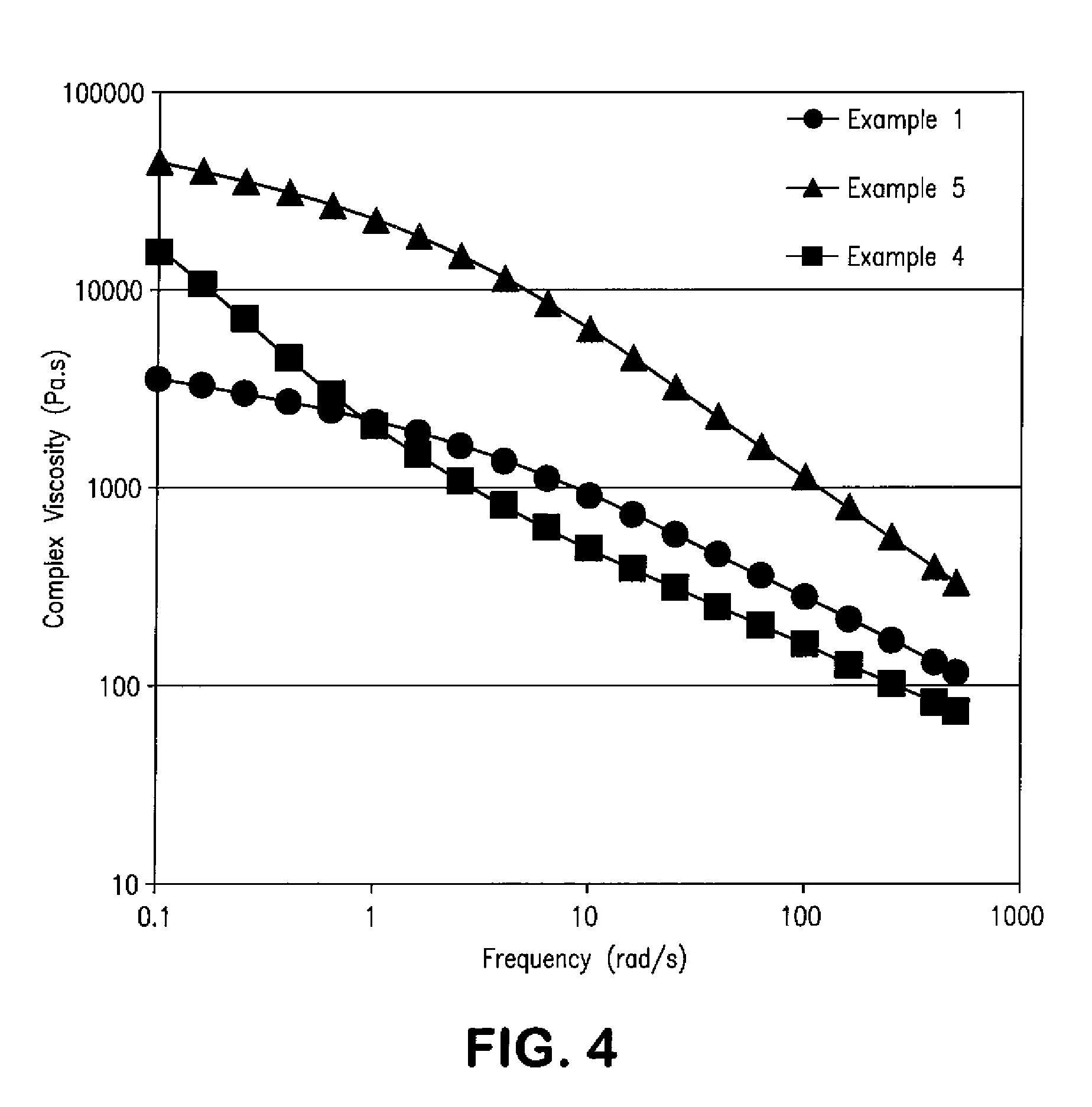Thermotropic Liquid Crystalline Polymer with Improved Low Shear Viscosity
a liquid crystalline polymer and low shear viscosity technology, applied in liquid crystal compositions, chemistry apparatuses and processes, etc., can solve the problems of low melt strength, difficult for the resulting material to maintain its physical integrity, and uneven filling of parts
- Summary
- Abstract
- Description
- Claims
- Application Information
AI Technical Summary
Benefits of technology
Problems solved by technology
Method used
Image
Examples
example 1
[0106]A 2 L flask was charged with 4-hydroxybenzoic acid (432.3 g), 2,6-hydroxynaphthoic acid (47 g), terephthalic acid (134.6 g), 4,4′-biphenol (104.3 g), acetominophen (37.8 g), and 33 mg of potassium acetate. The flask was equipped with C-shaped stirrer, a thermal couple, a gas inlet, and distillation head. The flask was placed under a low nitrogen purge and acetic anhydride (99.7% assay, 501.5 g) was added. The milky-white slurry was agitated at 75 rpm and heated to 140° C. over the course of 95 minutes using a fluidized sand bath. After this time, the mixture was then gradually heated to 350° C. steadily over 290 minutes. Reflux was seen once the reaction exceeded 140° C. and the overhead temperature increased to approximately 115° C. as acetic acid byproduct was removed from the system. During the heating, the mixture grew yellow and slightly more viscous and the vapor temperature gradually dropped to 90° C. Once the mixture had reached 350° C., the nitrogen flow was stopped. ...
example 2
[0107]A 2 L flask was charged with HBA (432.3 g), HNA (47 g), TA (134.6 g), BP (104.3 g), APAP (37.8 g), 33 mg of potassium acetate, and 19.65 g of N1, N4-diphenylterephthalamide, which has the following structure:
[0108]The flask was equipped with C-shaped stirrer, a thermal couple, a gas inlet, and distillation head. The flask was placed under a low nitrogen purge and acetic anhydride (99.7% assay, 501.5 g) was added. The milky-white slurry was agitated at 75 rpm and heated to 140° C. over the course of 95 minutes using a fluidized sand bath. After this time, the mixture was then gradually heated to 350° C. steadily over 290 minutes. Reflux was seen once the reaction exceeded 140° C. and the overhead temperature increased to approximately 115° C. as acetic acid byproduct was removed from the system. During the heating, the mixture grew yellow and slightly more viscous and the vapor temperature gradually dropped to 90° C. Once the mixture had reached 350° C., the nitrogen flow was s...
example 3
[0109]A 2 L flask was charged with HBA (432.3 g), HNA (47 g), TA (134.6 g), BP (104.3 g), APAP (37.8 g), 33 mg potassium acetate, and 19.65 g of N1,N3,N5-triphenylbenzene-1,3,5-tricarboxamide, which has the following structure:
[0110]The flask was equipped with C-shaped stirrer, a thermal couple, a gas inlet, and distillation head. The flask was placed under a low nitrogen purge and acetic anhydride (99.7% assay, 501.5 g) was added. The milky-white slurry was agitated at 75 rpm and heated to 140° C. over the course of 95 minutes using a fluidized sand bath. After this time, the mixture was then gradually heated to 350° C. steadily over 290 minutes. Reflux was seen once the reaction exceeded 140° C. and the overhead temperature increased to approximately 115° C. as acetic acid byproduct was removed from the system. During the heating, the mixture grew yellow and slightly more viscous and the vapor temperature gradually dropped to 90° C. Once the mixture had reached 350° C., the nitrog...
PUM
| Property | Measurement | Unit |
|---|---|---|
| temperature | aaaaa | aaaaa |
| angular frequency | aaaaa | aaaaa |
| viscosity | aaaaa | aaaaa |
Abstract
Description
Claims
Application Information
 Login to View More
Login to View More - R&D
- Intellectual Property
- Life Sciences
- Materials
- Tech Scout
- Unparalleled Data Quality
- Higher Quality Content
- 60% Fewer Hallucinations
Browse by: Latest US Patents, China's latest patents, Technical Efficacy Thesaurus, Application Domain, Technology Topic, Popular Technical Reports.
© 2025 PatSnap. All rights reserved.Legal|Privacy policy|Modern Slavery Act Transparency Statement|Sitemap|About US| Contact US: help@patsnap.com



